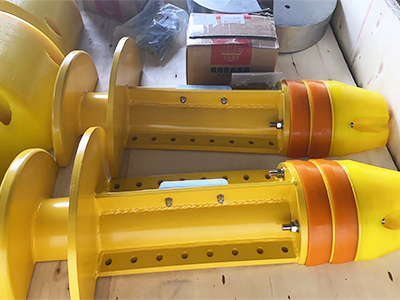China Bend Restrictor for Optimal Hose Protection
China bend restrictors are of high quality and low maintenance, and are mainly used to protect hoses and reduce excessive bending of pipeline hoses. They are becoming the best choice for protecting hoses in marine operations.

Development of hoses
With the continuous growth of world energy demand, the efforts to extract oil and gas resources from the ocean are also increasing. In the process of energy extraction and transportation, hoses have been increasingly widely used due to their strong designability, corrosion resistance, easy bending, easy laying and recycling, and more economical and practical advantages. Hoses may be worn, broken, or damaged by external forces such as ships and ocean currents in the ocean. The installation and maintenance of marine engineering accessories require a lot of costs, so it is necessary to take protective measures before using the hose.
Working principle of the bend restrictor
The basic working principle of the bend restrictor is to limit the bending angle of the pipe and cable through a mechanical structure, thereby controlling its minimum bending radius to protect its internal structural integrity. Its working mechanism mainly includes the following aspects:
• Segmented articulated structure design
Bend restrictors are usually composed of a series of interlocking rings or cone structures (called "spines" or "cone segments"), which can rotate relative to each other in the longitudinal direction, but the rotation angle is limited.
• Angle-limited stop design
A stop structure is designed between each segment. When the cable is bent, the segments will contact each other, limiting the angle of further bending, thereby achieving a "stuck" effect and preventing further excessive bending.
• Minimum bending radius control
When designing, the overall structure is calculated and arranged according to the minimum allowable bending radius of the protected cable or riser. Once this limit angle is reached, the limiter will intervene to prevent further bending and play a protective role.
• Load dispersion
Bend restrictors not only control bending, but also disperse external pressure or impact force to a certain extent, reducing the risk of damage caused by single-point force on the cable.
Hoses are usually connected to rigid structures (such as subsea risers, pipeline terminals or wellhead structures). The hose may bend excessively at the joint, which may cause serious damage to the pipeline and affect normal production operations. Therefore, bend limiters are usually installed on hoses connected to rigid structures to prevent excessive bending and thus avoid damage to the pipeline.
Application of bend restrictors
Bend restrictors are mainly used in static applications and less used in dynamic environments. Their design is more complicated and various load conditions need to be considered. At present, the bend restrictors on the market are made of polyurethane and ductile iron, both of which occupy a certain market. Ductile iron bend restrictors have low cost, strong impact resistance and can withstand high loads. Polyurethane bend restrictors are lightweight and have strong corrosion resistance on this basis.
Both polyurethane bend restrictors and ductile iron bend restrictors can provide protection for marine hoses. Polyurethane bend restrictors have a service life of 25 years, low maintenance, and high quality. They are the best choice for protecting hoses in the long run. Philson is a Chinese bend limiter manufacturer integrating production and sales. If you want to know more about bend restrictors, please feel free to contact us.




